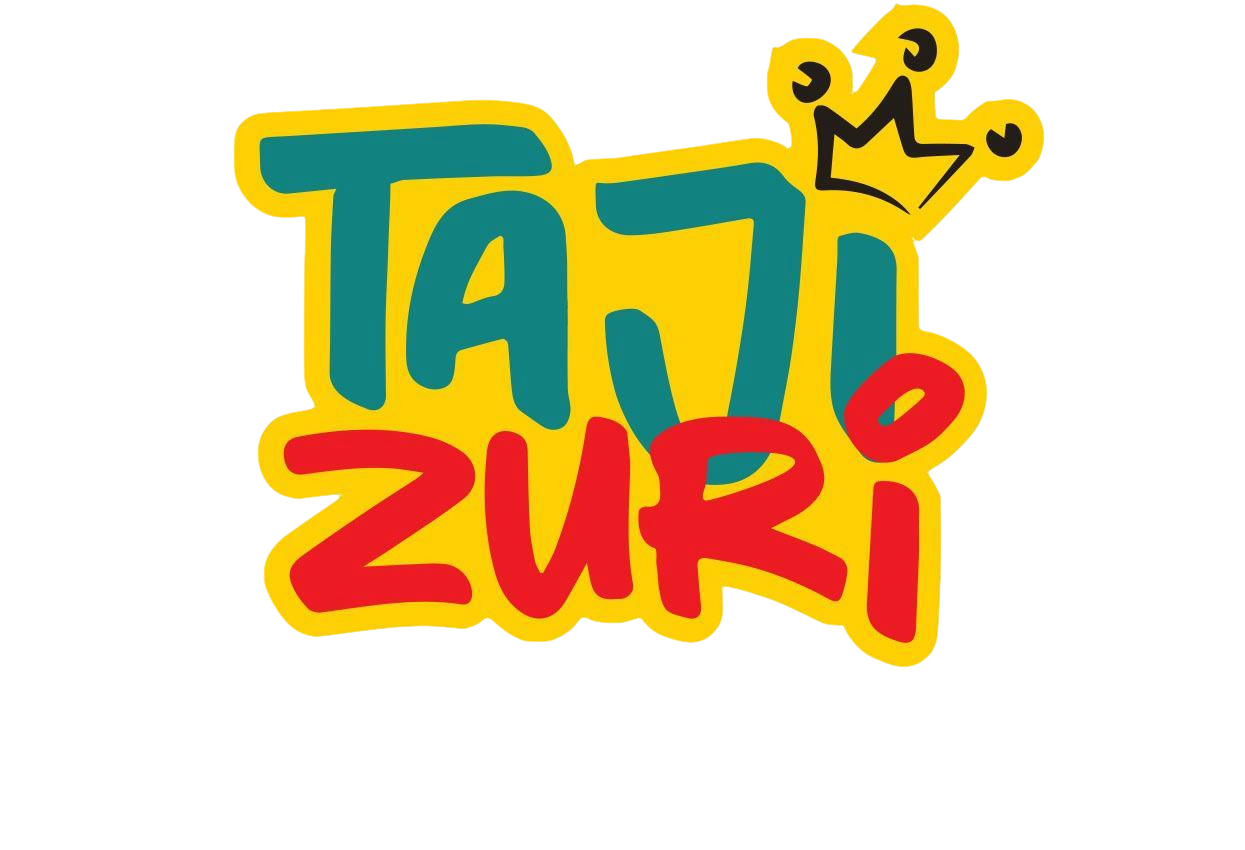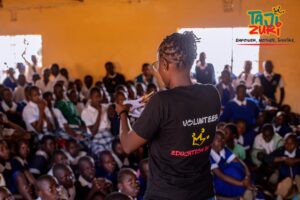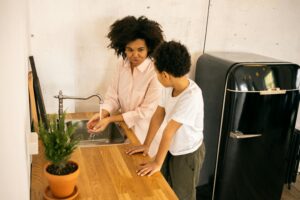We often perceive inclusion to be a grand idea that takes a lot of effort, planning and capital. It is
perceived as something for “those people and not me” to implement. In my opinion,inclusion
starts and exists anywhere and everywhere,in fact,I boldly call it a character trait, something that
can be learnt or nurtured, like empathy or kindness. You do not need fancy degrees or
important titles to be inclusive. It is for each and everyone regardless of your background.
Do you think while Noah was in the ark,he felt like he was in quarantine? The pandemic forced
us to innovate new ways of connecting and keeping in touch with one another. It brought new
vocabulary into our everyday lives-quarantine, pandemic, virus,social distancing. Words
reserved for serious scientists in sanitary labs were now common at the dinner table. Parents
were distraught with how to keep their children safe and most chose to keep their children
indoors. A wise choice.
Parents were faced with an added layer, how would they explain these new terms to their
children. Fortunately, the world around us adapted. The media was prolific with press briefings,
government civic awareness campaigns,posters etc. Schools moved online and teachers and
parents did their best to keep the learners engaged at home.
The pandemic also exposed stark inequalities in our society. While this transition was
happening,Deaf children were left behind. Schools for the Deaf were ill equipped to handle this
transition to online classes. The lack of infrastructure and resource capacity were the greatest
threats to this transition. Further, many parents lacked adequate Sign language skills to
continue to homeschool their children.
This is how the idea to use Noah’s ark bible story to teach Deaf children on self isolation,
quarantine and Covid-19. Although the pandemic has persisted for much longer than the floods,
the story was an excellent example of how to take measures to mitigate a catastrophic event.
By using sign language to teach the story of Noah, Covid-19 lingo became more relatable to
Deaf children. This is what we do at Lugha Ishara. At Lugha Ishara Deaf children learn in a fun,
inclusive and accessible way.
Lugha Ishara is an organization working to end language deprivation in Deaf children by
creating an inclusive and accessible learning environment.Human beings are born with an
innate need for connection. Language,any language, spoken or signed, connects us. Language
deprivation occurs when children are not exposed to meaningful language in the critical brain
development years of 0-5 years.The impact of language deprivation on children is often
irreversible and its effects run through all domains of a child’s life.Socio-emotional disconnect
between parent and child is by far the greatest consequence of language deprivation.
American born Deafblind author and activist once said “Blindness separates people from things
but Deafness separates people from people.” It is easy for misconceptions about Deaf people
and in particular children to be easily normalized. It is not uncommon to hear people describe
Deaf children as temperamental or easily frustrated. Wouldn’t you be as well, if no one made an
effort to communicate to you and with you in a language you understood?
When deaf children aged 4-12 gathered every week during December holidays to produce the
first ever Kenya Sign Language Christmas Cantata, it was a fun activity to teach the children
about christmas. Another unintended result was myth busting- that Deaf children are incapable
of talent. This is what we do at Lugha Ishara’s Talent Academy and the Hangout Hub. The
Talent Academy is a space specifically curated for Deaf children to grow their talents while the
Hangout Hub is a space for the children to learn Kenya Sign Language (KSL) while their parents
connect,relate and heal.
I stumbled upon Lugha Ishara by mere happenstance. I was at church when the pastor
announced that all children would henceforth remain at Sunday school for the duration of the
service. I was hesitant because I did not think the teacher would adequately support my then 6
year old son who is deaf. This was only my second or third visit to the church and I considered
quitting. My son uses assistive hearing technology called a Cochlea Implant. Therefore,every
time he joins a new activity, I do my usual dance where I explain what it is, why he has it and
how to best support him. It is my normal and I do it undaundently but I wish I did not have to. I
wish Inclusion was the default standard. To my pleasant surprise, I found that the church had a
Teacher who Signed and understood his needs as a Deaf child. It turned out that this teacher
was the co-founder of Lugha Ishara. We hit it off immediately.
I was looking for a way to plug in to the Deaf Community as a way to expose my son to Deaf
Culture and to chart an easier path for the generations of Deaf children who will come after my
son. I found both in Lugha Ishara where we have been attending the Hangout Hub to connect
with other parents and where I am now the Programs and Impact Coordinator. It has been a
steep learning and unlearning curve with many great lessons. The most profound being that
Inclusion is not a favor to marginalized persons but a Human Right




